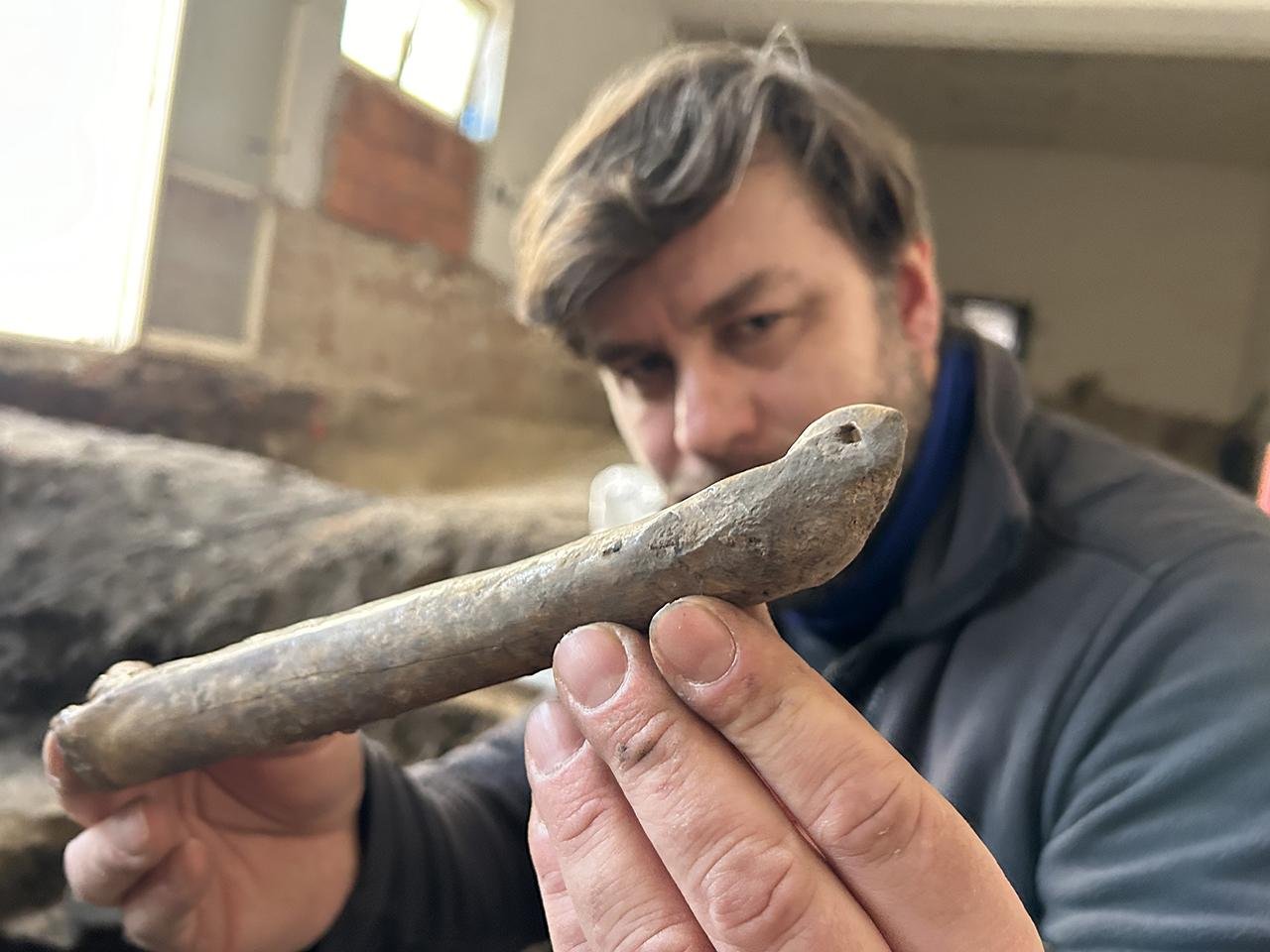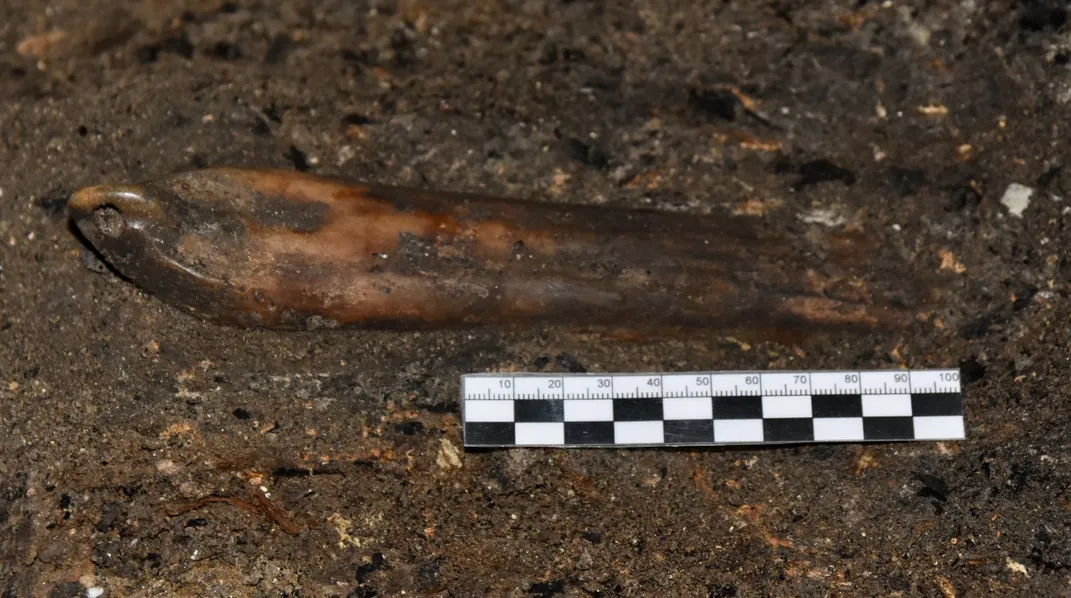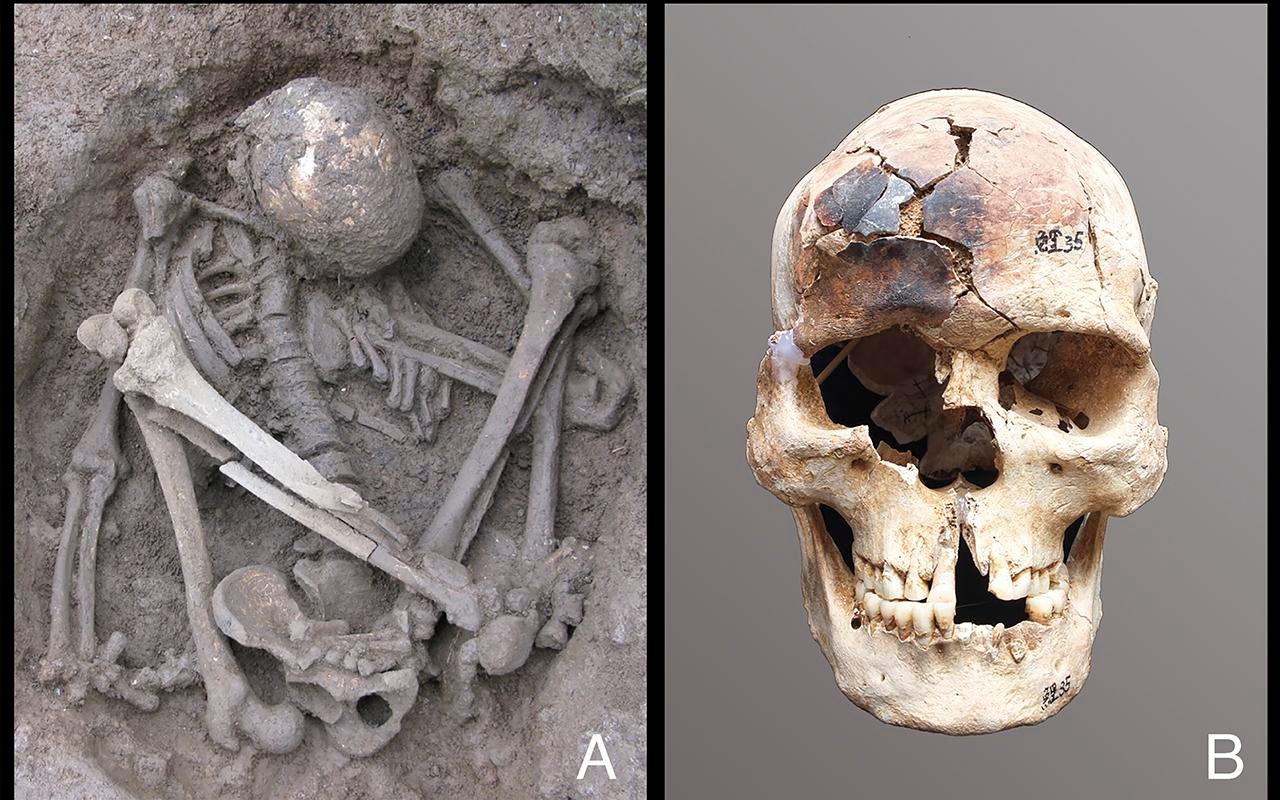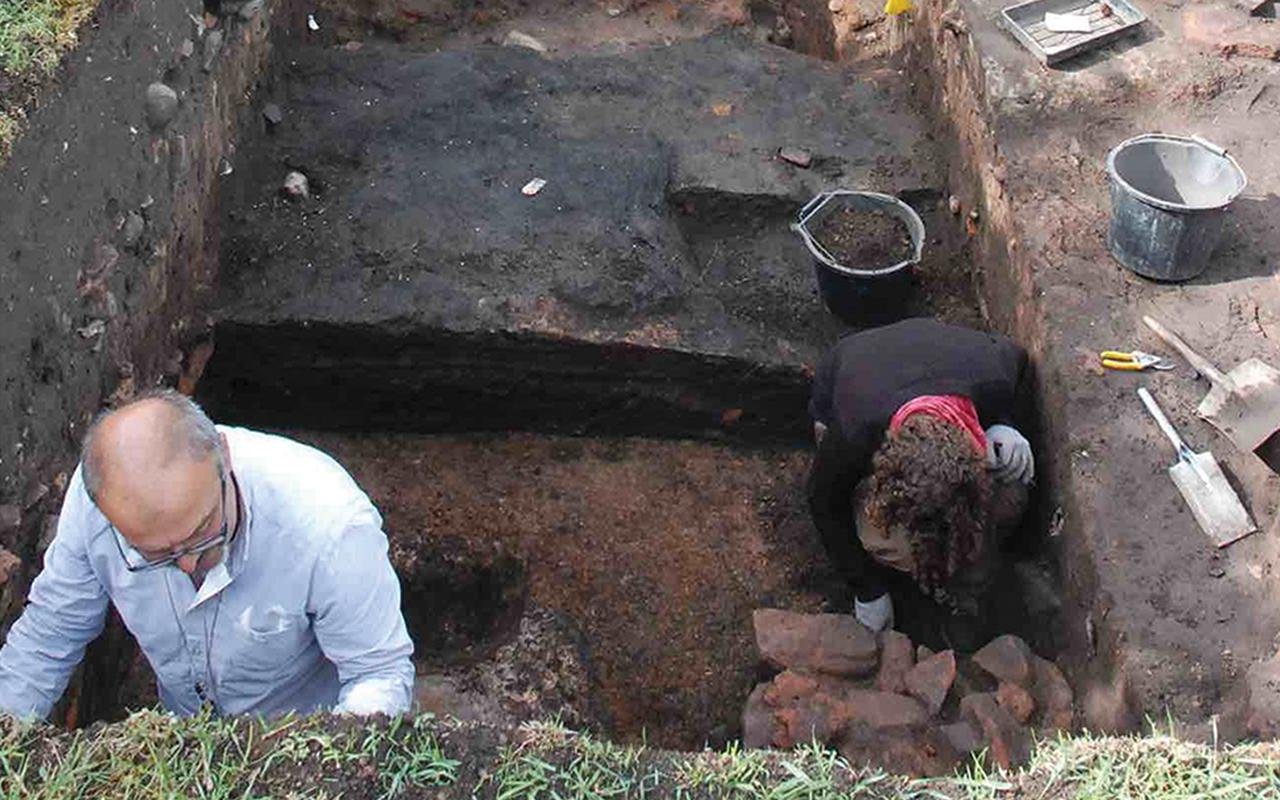Archaeologists from the Comenius Museum in Přerov, Czech Republic, recently unearthed a 1,000-year-old ice skate crafted from animal bone during their rescue excavations in the city’s Upper Square.
 This strap would have secured the skate to a shoe or sled, enabling individuals to traverse frozen surfaces with relative ease. Credit: Zdeněk Schenk / The Comenius Museum in Přerov
This strap would have secured the skate to a shoe or sled, enabling individuals to traverse frozen surfaces with relative ease. Credit: Zdeněk Schenk / The Comenius Museum in Přerov
The skate, likely made from the shinbone of a horse, was found amidst pottery fragments dating from the 10th or 11th century. This area, initially comprising several smaller settlements along the branches of the Bečva River, eventually evolved into a fortified square and fortress, under the reign of Polish King Boleslav the Brave.
According to Zdeněk Schenk, an archaeologist involved in the excavation, the skate’s design is both simple and ingenious. It features a curved shape with drilled holes, allowing for the attachment of a strap.
This strap would have secured the skate to a shoe or sled, enabling individuals to traverse frozen surfaces with relative ease. Rather than being used for leisurely skating, these bone skates served as essential tools for transportation and trade during harsh winter months.
 The skate was found amidst pottery fragments dating from the 10th or 11th century. Credit: Zdeněk Schenk / The Comenius Museum in Přerov
The skate was found amidst pottery fragments dating from the 10th or 11th century. Credit: Zdeněk Schenk / The Comenius Museum in Přerov
The significance of this discovery extends beyond Přerov, as similar artifacts have been unearthed across Europe, particularly in Viking settlements in Central and northwestern regions like Scandinavia. Such finds, often dating to the 10th century, highlight a shared knowledge of survival techniques among diverse cultures facing the challenges of harsh winters.
The Upper Square area was once a series of smaller settlements along the branches of the Bečva River, centered on a fortified square where a fortress would later be constructed. This strategic location, coupled with the necessity of winter travel, likely contributed to the prevalence of bone skates in the region.
The bone skate, now preserved for public viewing, will be displayed at the Comenius Museum in Přerov Castle, serving as a tangible link to the past for visitors.





